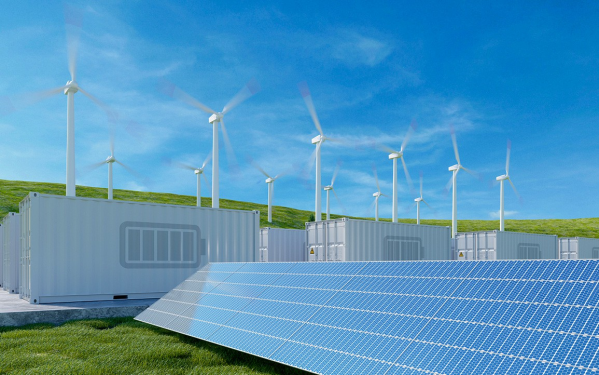In recent years, the demand for clean and sustainable energy has soared, driving the adoption of renewable energy sources like solar and wind power. However, the intermittent nature of these sources has posed a challenge. Fortunately, energy storage batteries have emerged as a game-changer, revolutionizing the way we harness renewable energy.
Renewable energy sources generate electricity when the sun shines or the wind blows, but the challenge lies in storing excess energy for later use. Energy storage batteries capture and store this excess energy, ensuring a constant power supply even when renewable sources are unavailable. This maximizes the efficiency of renewable energy systems and unlocks their full potential.

Grid Stability Energy storage batteries play a vital role in stabilizing the electric grid. They help smooth out power fluctuations caused by variations in renewable energy generation. By storing surplus energy during low-demand periods, batteries release it during peak demand, balancing the load and reducing strain on the grid. This enhances the overall reliability and resilience of the energy system.
Lithium-ion batteries have become the go-to technology for energy storage. With high energy density, longer cycle life, and faster response times, they are widely used in residential and commercial applications. These batteries provide reliable energy storage solutions for various renewable energy systems.
Flow batteries are another promising technology in energy storage. They store energy in liquid electrolytes contained in separate tanks, allowing for easy scalability and extended storage duration. Flow batteries are particularly suitable for large-scale applications, such as grid-level energy storage, where long-duration storage is required.
Energy storage batteries have a significant impact on energy costs and grid management. By storing excess energy and releasing it during peak demand, they reduce the need for expensive fossil fuel-based power plants, resulting in more stable electricity prices. Moreover, batteries provide grid operators with greater flexibility in matching energy supply with demand, leading to improved grid stability and a more efficient use of resources.

The integration of energy storage batteries with smart grid systems is transforming renewable energy utilization. Smart grids, equipped with advanced sensors and communication technologies, optimize energy storage by analyzing real-time data on production, consumption, and grid conditions. This enables intelligent decision-making, such as charging batteries when renewable energy generation is high and demand is low, further enhancing the efficiency and effectiveness of renewable energy systems.
Significant advancements in energy storage battery technologies have resulted in improved performance and cost reductions. Innovative battery chemistries, such as solid-state batteries, offer higher energy density and improved safety. Additionally, economies of scale and manufacturing innovations have made energy storage batteries more affordable and accessible. These technological advancements and cost reductions continue to drive the widespread adoption of energy storage batteries in renewable energy systems.
With continuous technological advancements and a commitment to research, development, and deployment, RAJA is leading the way in providing innovative energy storage solutions. By investing in these technologies, we accelerate the transition to a renewable energy-powered world, reducing reliance on fossil fuels and building a more resilient and reliable energy infrastructure.
RAJA Energy Storage Batteries empower individuals and communities to generate and store their own renewable energy, contributing to a brighter and greener future. Let us embrace this revolutionary solution, powered by RAJA, and unlock the full potential of renewable energy. Together, we can shape a sustainable world for generations to come.
By continuing to use the site you agree to our privacy policy Terms and Conditions.